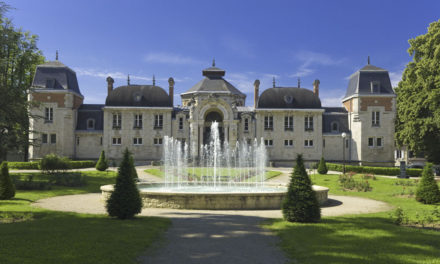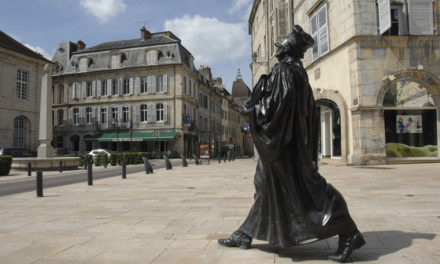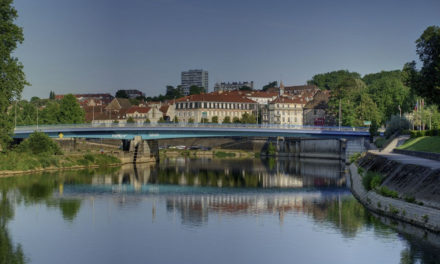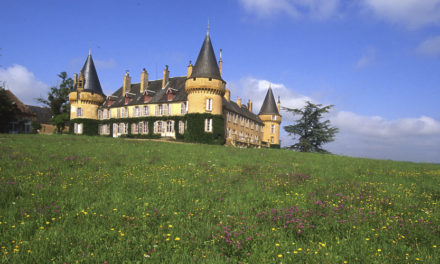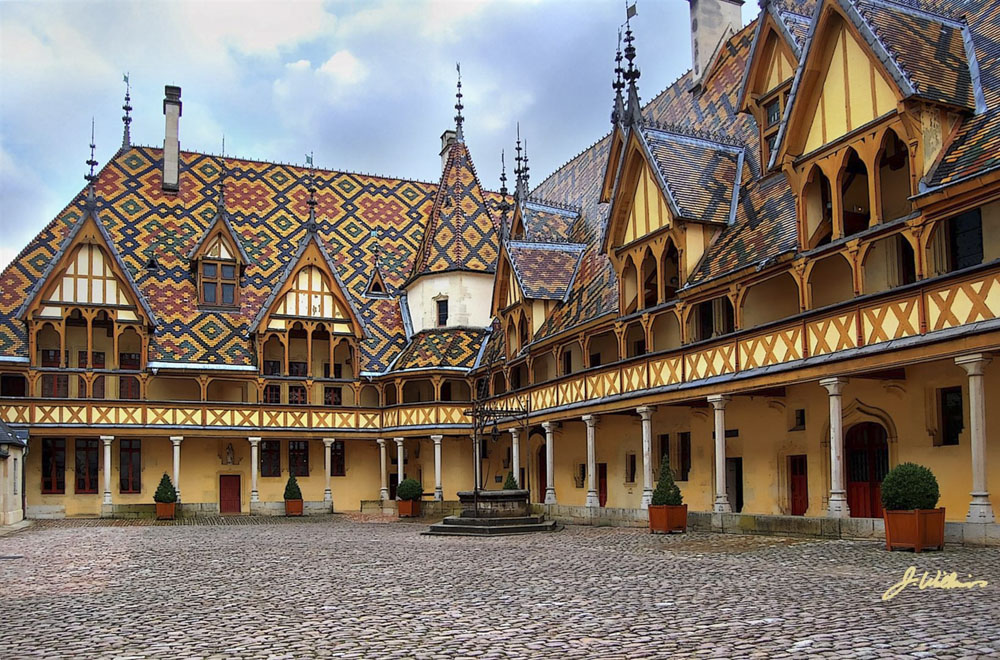
Courtyard of the medieval hospital of Saint-Esprit, now the Hôtel-Dieu, Beaune, France. © Jenifoto/Fotolia
Near Montbard in the north of the department, the ancient Abbey of Fontenay, founded in 1119, is one of the the best preserved Cistercian abbeys. The Chateau de Bussy Rabutin belonged to a general in the cavalry whose error cost him five months in the Bastille. Following his “Histoire Amoureuse des Gaules” which caused his downfall at court, Roger, Comte de Bussy, spent another year in the Bastille and was then exiled to Burgundy for 16 years where he devoted himself to the Château which has an amazing collection of over 200 paintings. The town Flavigny-sur-Ozerain with its walls and two fortified town gates, has an aura of medieval mystery and exudes the aroma of the aniseed balls for which it is known. With narrow winding streets, turreted houses and the houses of former wine growers, it is a charming relic of those times.
Towns in the Cote d'Or
The Dijon City Pass
Book a Hotel in the Cote d'Or
The Côte de Nuits
South of Dijon the great names of the Côte de Nuits include the Grand Crus of Chambertin, Vougeot, Nuits St Georges and Romanée-Conti. The Côte de Beaune includes Puligny Montrachet , Meursault, Château de Pommard and Corton Charlemagne, all of them household names. Surrounded by medieval ramparts, Beaune, the wine capital of Burgundy, is a glorious spectacle of gold and red, the characteristic colours of the wines. The famous Hôtel Dieu, founded in 1443 to help the sick and poor, and still housing the elderly, also has a museum with Roger van der Weyden’s extraordinary polyptych of The Last Judgement. There are many interesting churches and the Musée des Beaux-Arts has wonderful paintings. The Marey Museum is named after the inventor of Chronophotography, the forerunner of the cinema. 322 of the 450 hectares of vineyards surrounding Beaune are Premier Crus. The Burgundy wine museum, built in 1946 records their history. On the banks of the River Saône the town of Auxonne has two fortified gates, a Chateau from Louis XI housing the Bonaparte Museum, and an arsenal built by Vauban. The church of Notre-Dame is a fine example of Gothic style and dates from the 13-15th centuries.
Semur-en Auxois
The picturesque town centre of Semur-en Auxois, capital of the Auxois, is virtually as it was in medieval times with its four towers overlooking the river and its two ancient stone bridges. The church of Notre-Dame contains numerous works of art and lovely stained glass windows. The Castle of Châteauneuf-en-Auxois is set high up on a rock, built around its square 12th Century keep and is synonymous with the region it defended. The many turreted village houses overlooking the canal indicate its successful involvement in trade in those days.
Dijon
Capital of the Côte d’Or, Dijon, once the city of the Dukes of Burgundy has an exceptional architectural heritage. Their palace remains to this day, surmounted by the tower of Philip the Good. Glazed rooftops and half-timbered and 17/18th century houses abound. The Cathedral of Saint Bénigne is now considered one of the finest examples of Romanesque architecture with its rotonde. There are eight museums one of which is devoted to the mustard for which Dijon is world famous, along with Crème de Cassis, the base of the aperitif ‘kir’ which originated when the blackcurrant bushes were planted in the late 19th century after the phylloxera beetle devastated the vines. The city has many parks and gardens and a Port on the Burgundy Canal offering tours of the surrounding area.
| Title | Address | Description |
|---|---|---|
COTE D’OR | Côte-d'Or, France |



